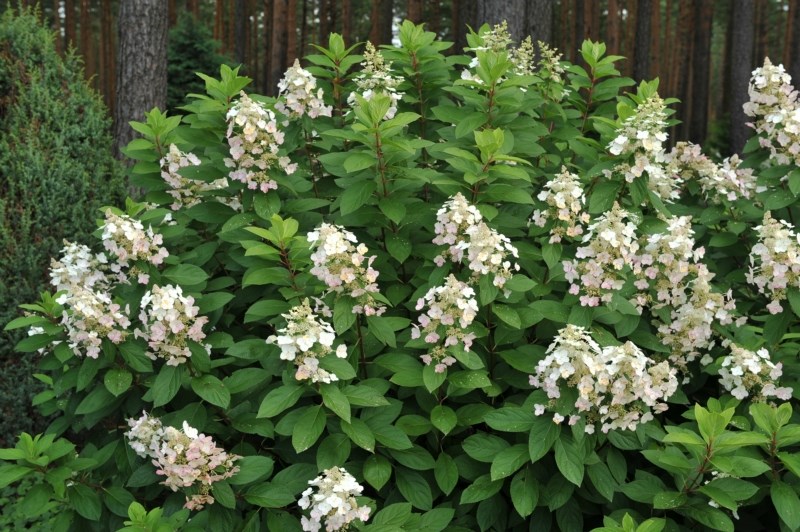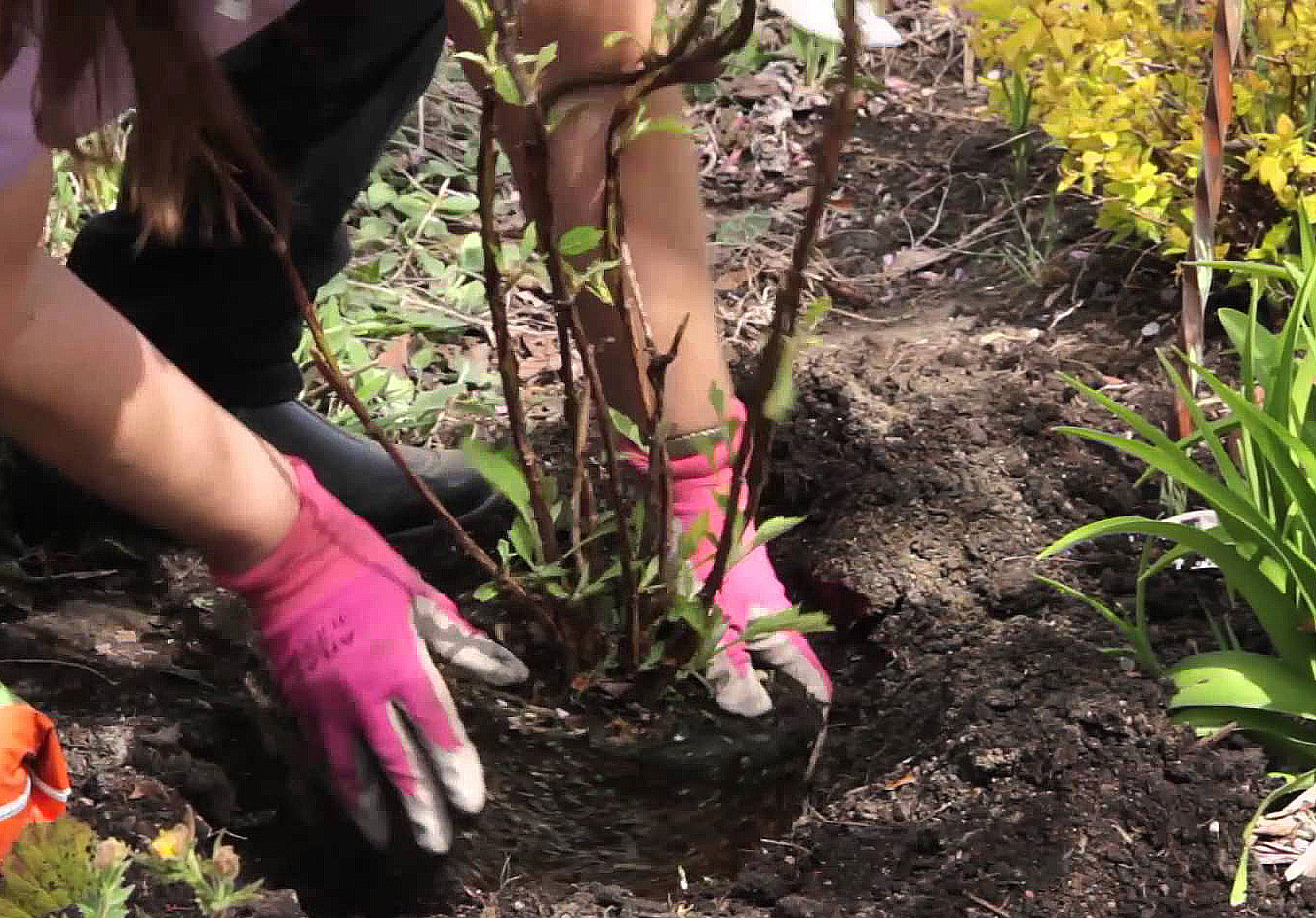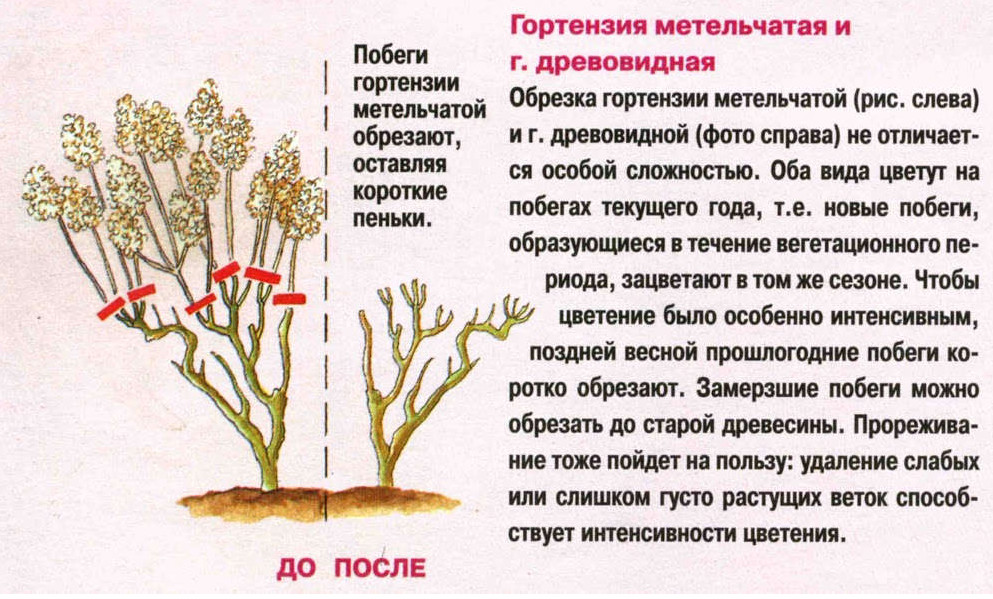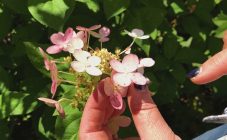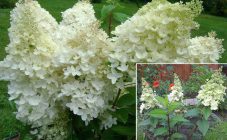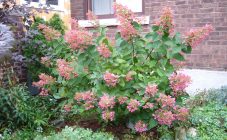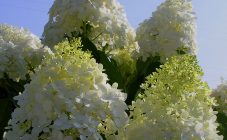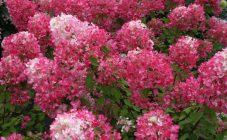The best flower that will decorate any site is hydrangea. It attracts attention with its magnificent flowering and luxurious bush shape. Hydrangea Tardiva is a variety of paniculate varieties, which is distinguished by an extraordinary shape of inflorescences and a pleasant honey aroma.
Description and characteristics of the variety
The homeland of the Tardiva panicle hydrangea is Japan. It was originally grown in China and Sakhalin. That is why the plant has a high frost resistance.
Hydrangea panicle Tardiva has properties that allow it to be grown throughout Russia, including in regions with unfavorable weather conditions.
Among the main advantages of the plant are the following:
- high immunity to infection with diseases affecting the root system;
- winter hardiness;
- restoration of the vegetative part in a short time;
- the possibility of cultivation in one place for many years (up to 40);
- long flowering period (before frost).
The height of the bush can reach 2, 5 - 3 m. The length of the inflorescence ranges from 40 - 55 cm. Flowers are mainly white, but over time they acquire a reddish tint. In one season, the plant grows to an impressive size.
When planting a hydrangea bush, it must be borne in mind that its root system has the ability to grow quite strongly and be located close to the soil surface. Therefore, when planting group plantings, the distance between the bushes should be from 2 to 3 m.
Planting and leaving
Before planting, you need to choose the right place where the bush will grow. A well-lit area that is not exposed to direct sunlight is ideal. Experienced gardeners recommend planting the plant along a hedge or at home.
The landing pit must be prepared in advance. Its dimensions can be 50 X 50 X 60 cm. A layer of peat 10 cm thick is poured onto the bottom. The acidity of the soil can range from low to medium. To bring the pH of the soil to a certain level, experienced gardeners add lemon juice to the water used for irrigation.
The seedling must be placed in the planting pit so that its root collar is above the soil level at a height of 5 - 6 cm. The pit is gradually covered with earth and watered. The soil must be well tamped. If this is not done, the possibility of the formation of voids is not excluded, which as a result will lead to the rapid drying of the earth.
After 2 - 3 weeks, the seedling takes root completely. This can be determined by the beginning of the development of new leaves on the branches.
Landing time matters a lot. In the northern regions, it is recommended to plant the bush in early spring. In areas with warm weather conditions, the plant is planted in the fall. The soil should be well warmed up when planting.
Despite the fact that the Tardiva hydrangea loves light, it does not tolerate direct sunlight. The best place for growing a plant is partial shade and no drafts.
So that the bushes do not interfere with each other, the distance between them should be at least 2.5 m.When planting hydrangeas in a group, the bushes need to be thinned out.
Hydrangea of this variety is able to tolerate dry periods well. To avoid drying out of the soil, the plant must be watered once every 7 days. Watering is combined with the introduction of mineral fertilizers under the bush.
If the watering mode is chosen incorrectly, the bush will bloom poorly, and the inflorescences will dry out quickly. For 1 m², you need to make at least 30 liters of water for 1 watering.
Proper plant care requires timely feeding. In early spring, fertilizers containing nitrogen are used. The use of humus as a top dressing contributes to the abundant flowering of the bush. When the hydrangea blooms, it is recommended to feed it with mineral fertilizers, which contain potassium and phosphorus. The frequency of fertilization should not exceed 1 time in 15 days. At the end of summer, it is better to stop feeding the bush. This gives the plant enough time to prepare for the pruning procedure.
Pruning hydrangeas is necessary after the flowering period. All wilted inflorescences, dry branches are removed to form the desired crown shape. In addition, it is recommended to shorten thin shoots up to 4 buds.
In some cases, pruning can also be done in early spring (before the bud swells). At this time, mainly sanitary and thinning pruning is performed. It is necessary to remove all branches damaged after winter, as well as shoots that thicken the crown of the bush.
If the plant is already old, it will bloom poorly and rarely. To update it, the bush is cut to the very root.
Caring for this hydrangea variety also involves removing weeds near the bush, as well as loosening the soil. Moreover, the last procedure must be carried out extremely carefully. This is due to the fact that the roots of the bush can be close to the soil surface. When tilling the soil, it is important not to damage the horse system. This can cause the plant to weaken, bloom poorly and build up green mass.
Despite the high rate of winter hardiness, the bush must be prepared for winter. To prevent freezing of the root system, a layer of humus, dry leaves or needles is laid around the trunk. If the winters are very harsh in the hydrangea growing region, the bush itself also needs to be insulated. To do this, it is wrapped with a covering material, and then a mesh frame is mounted around the bush (it should be at a distance of 25-30 cm from the plant). It is completely filled with dry foliage and then wrapped in plastic wrap.
Several options can be used to propagate hydrangeas. Among the most affordable are the following:
- Cuttings... They have been cooked since summer. It is better to use still young shoots that have not had time to woody. The shoots are placed in water for 2 - 3 days, and then the leaves are cut off at their bottom. The slice is processed with a growth stimulator. This contributes to the rapid formation of the root system. After that, the cuttings must be planted in a container filled with soil containing peat and sand. The container is covered with a film or a transparent can, which contributes to the creation of a greenhouse effect. In this form, containers are placed in the basement. During the spring and summer, seedlings should be watered periodically. They are planted in a permanent place at the end of summer (in August). Until that time, young and strong roots have already formed.
- By dividing the bush... For this, the bush, after flowering is complete, is dug up and divided into several parts. In this case, you need to pay attention to the presence of a growth bud on each part. After that, each part is planted in a planting pit. Moreover, the soil on the site must also be prepared in advance. To do this, it is fed with organic or mineral fertilizers.
- Layers... In this way, hydrangea is propagated only at the beginning of spring.Experienced gardeners rarely use it. This is due to the fact that reproduction by layering cannot give the expected positive result. When propagating by layering on a site near the bush, a hole is dug no more than 15 - 20 cm deep. Then a young shoot is taken, located closer to the root, and placed in a hole, which is covered with earth. The shoot planted in this way should be watered as the soil dries. After young leaves begin to appear on the layer, it can be separated. After 2 - 3 weeks, the seedling is transplanted to a permanent place.
Experienced gardeners recommend choosing cuttings for propagation. This method gives an almost 100% guarantee of survival rate.
According to experienced gardeners, the Tardiva hydrangea is a unique decoration for any site. The bush does not require much care. Over the years, the bush will produce gorgeous inflorescences with an attractive honey scent.
